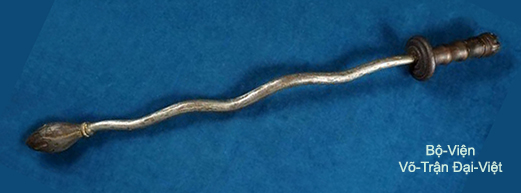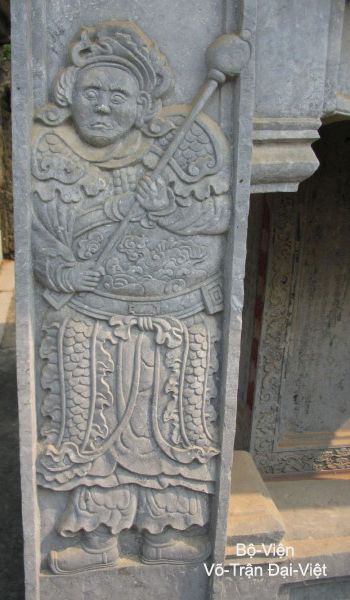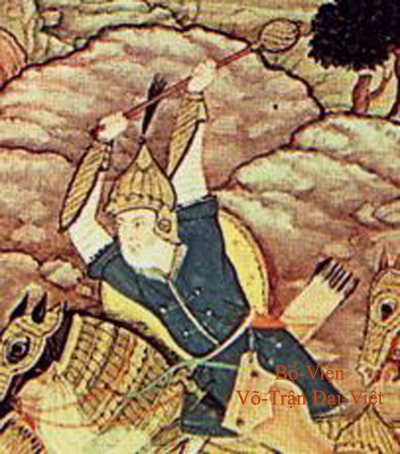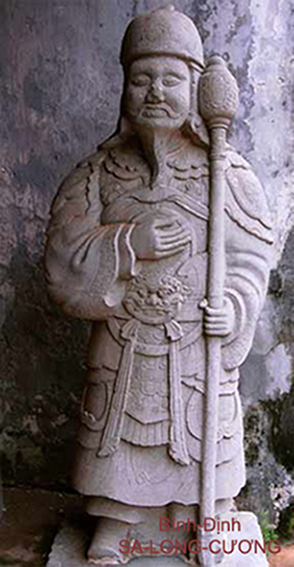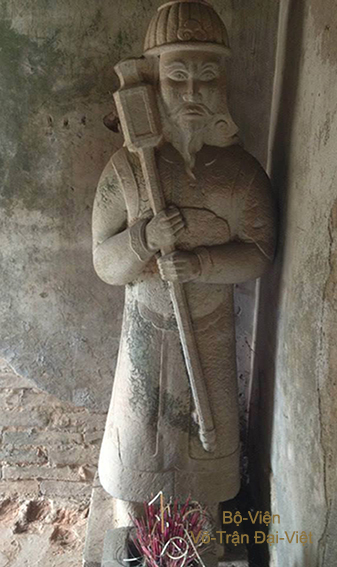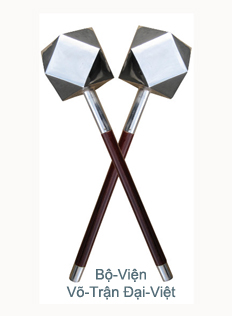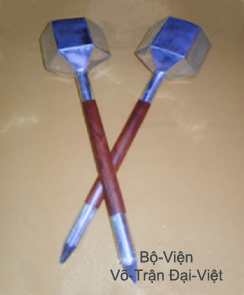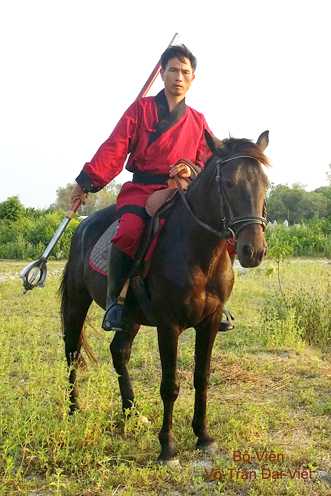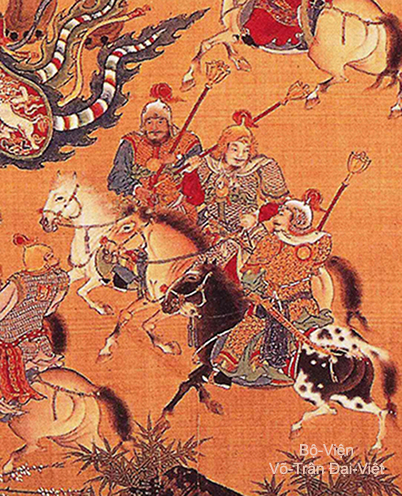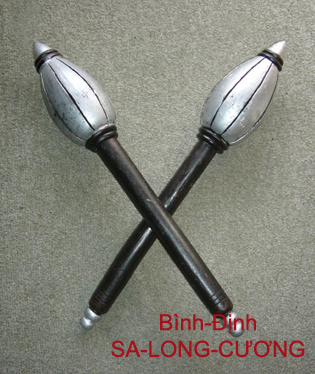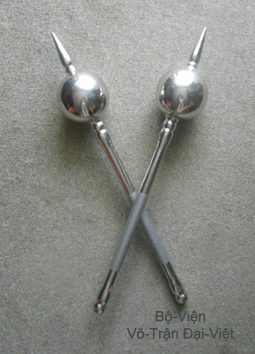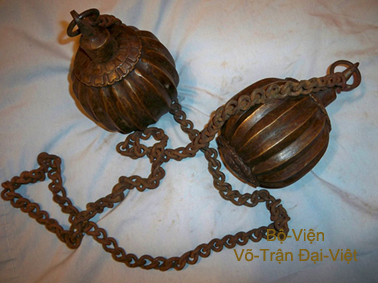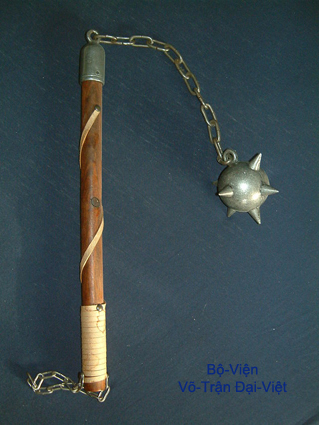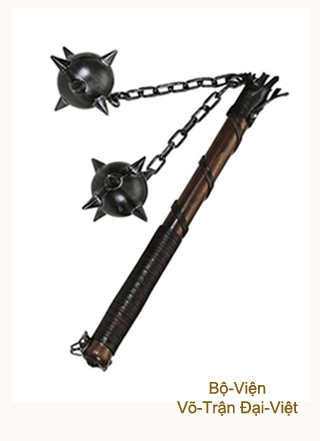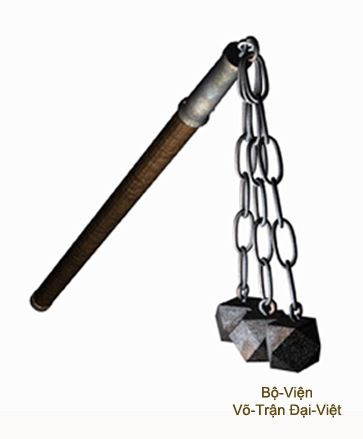II.
THE MEDIEVAL WEAPONS
4 - The Shock-Arms
THE BATTLE MALLET
WAR MACES
« CHÙY » & « TRÙY »
(鎚 - 錐)
The Battle Mallet includes Three categories :
A - Those of Battle Mallet With No Apical Point ;
B - Those of Battle Mallet holding an Apical Point ;
C - Those of Battle Mallet under the shape of War Flails called Shooting Star War Maces.
A - The Battle Mallet With No Apical Point, called War Mace « Chùy » (鎚) available in Three kinds :
1) The « Unique War Mace - Độc-Chùy » (獨 鎚) : there's War Mallet with short handle and includes :
α) The « Unique War Mace - Độc-Chùy » about 20 cm long, used for throwing : it's la specific weapon from China, employed as a "Hidden Weapon - Ám-Khí" during the Three Kingdoms (Tam-Quốc 三 國) period (220~280 AD), called « Phi-Chùy - Flying War Mace ».
β) The « Unique War Mace - Độc-Chùy » about 72 cm long, used with one handed wielding : it's a specific Battle Mallet from China under the MING Dynasty (1368-1644), as the « Lục-Giác-Chùy - Six Edged War Mace », the « Hủy-Lôi-Chùy - Destructive Thunder War Mace », etc. ;
Flying War Mace |
Destructive Thunder War Mace |
Snake Headed War Mace |
Snake Shaped and Snake Headed War Mace |
2) The « Great War Mace - Đại-Chùy » (大 鎚) : there's Battle Mallet Without Apical Point, but holding a long shaft for wielding with two hands. This was the Shock-Arm favourite of Mongol Warriors in 13th century and of Đại-Việt Officers in 17th century. It exists Two kinds :
2a) The « Great War Mace - Đại-Chùy » holding a middle shaft about 95 cm long (often erronemously confused with the Mase Unique War Mace - Độc-Chùy) for being wielded with two hands in the Heavy Cavalry :
Statue of Armoured Đại-Việt Officer from Heavy Cavalry |
Mongol Officer of Heavy Cavalry wielding the Great War Mace
|
2b) The « Great War Mace - Đại-Chùy » holding a long shaft for being wielded with two hands in the Infantry and sometimes in Cavalry :
Statue of Armoured Đại-Việt Officer from Infantry |
Statue of Armoured Đại-Việt Warrior from Infantry |
3) The « Two Matched War Maces - Song-Chùy » (双 鎚) : there's the War Mallet with short handle, holding a Head in various forms - Roundness shape Head, Hexagonal shape Head, Octogonal shape Head, etc. - to make use by pair and it's a favourite Weapon of China (i.e. : Two Matched Maces with Octogonale Head 八 稜 双 鎚 of Mandchus Qing).
Two Matched War Maces |
Two Matched War Maces |
B - The Battle Mallet holding an Apical Point, called War Mace « Trùy » (錐) available in Two kinds :
1) The « Great War Mace with Apical Point - Đại-Trùy » (大 錐) : there's Battle Mallet holding an apical point and a long shaft for wielding with two hands in Cavalry :
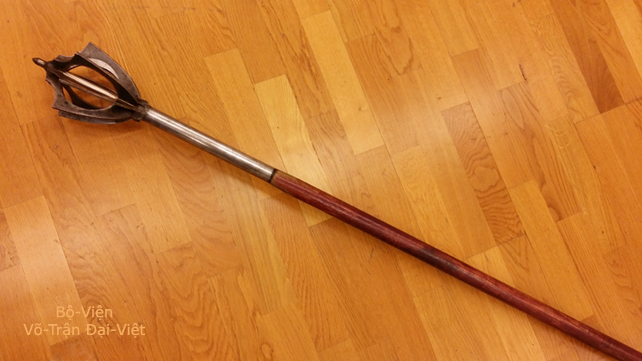
(大 錐)
( Photo Credit : Võ-Trận Đại-Việt Department )
Martial Student from Đại-Việt Medieval Martial Arts |
Statue of Armoured MING Warriors from Chinese Cavalry |
2) The « Two Matched War Maces with Apical Point - Song-Trùy » (双 錐) : there's Battle Mallet holding an Apical Point, with short handle, to make use by pair and it's a specifical weapon of Việt people (i.e.: Two Matched War Maces on the time of Tây-Sơn Dynasty).
Two Matched War Maces |
Two Matched War Maces |
C - The Battle Mallet under the shape of War Flails called Shooting Star War Maces, constituted of War Mace « Chùy » (鎚) linking with Metal Chain and belonging to the Category of Light Shock Arms. It includes Two kinds :
1) The « Shooting Star War Mace - Lưu-Tinh-Chùy » (流 星 錘) holding no Shaft : there are Two War Maces linked to two ends of a Metal Chain in order to hold for projecting and bindind ;
2) The « Shooting Star War Mace - Lưu-Tinh-Chùy » (流 星 錘) holding a Shaft : that's a weapon having One to Three War Maces linking with Metal Chains to an end of the Shaft.
« Shooting Star War Mace » holding no Shaft |
« Shooting Star War Mace » holding a Shaft
|
|
(To be continued...)
Committee of TRỊNH Quang Thắng. |
Copyright © 2004 - 2017 by ACFDV - All rights reserved.
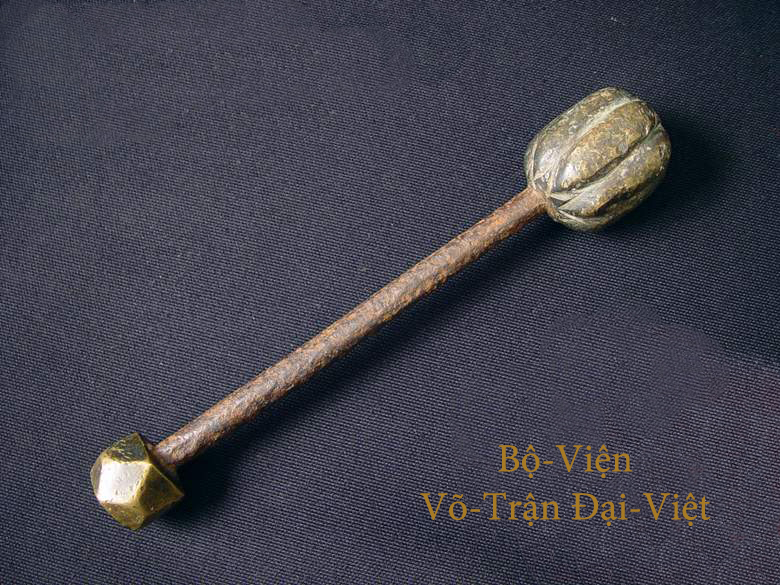
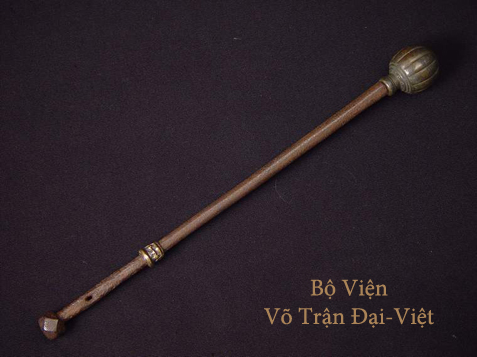
_RL01.jpg)
